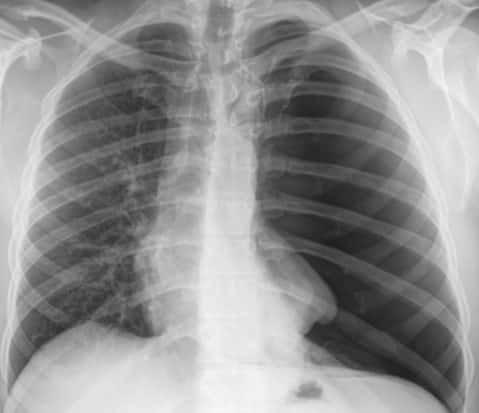
Health Editor’s Note: You might wonder why this article is important when the title mentions that this study mostly relates to mice. We all know that mice are used when research is done to find out how to help humans. When a person has severe COVID-19, he or she will be given oxygen by mask or cannula, then if this supplemental oxygen is not adequate to keep body tissues profused with oxygen, he or she may need to be placed onto a ventilator in order to make sure the body tissues have enough oxygen to survive. Not enough oxygen in the cells, then the cells die. Another oxygenated procedure can be used which bypasses the lungs and heart and allows the lungs and heart to rest (ECMO-External corporeal membrane oxygenation) but this is rarely done as there are far fewer ECMO machines than there are ventilators. In reality oxygen, as strange as it may seem, can be harmful to the lungs, especially when given over a long period of time.
The human body has bacteria on and in it. Lots and lots of bacteria of all kinds. We each have our own microbiome of bacteria and for most of us we do not become ill from the bacteria we live with daily. Bacteria either likes oxygen or does not live well in oxygen’s presence. Staphylococcus likes oxygen, so when a person is given oxygen this bacteria tends to multiply. Staphylococcus causes infections that can make someone quite ill.
The research group used mice which had no microbiome (germ-free) and found that these mice were protected from oxygen induced lung injury. The study also used mice with a microbiome and after 3 days of oxygen therapy had damage to their lungs.
Some cases of COVID-19 require oxygen so the patient can access oxygen and have enough circulating in the blood to keep tissues alive and well. Some who are critically ill, as with severe COVID-19, will also have antibiotics administered. The question is could antibiotics in combination with oxygen affect the severity of COVID-19. The answer is that some antibiotics that would kill and control Staphylococcus would negatively affect the lungs.
These may be some answers to the question as to why people with severe COVID-19, who are placed on ventilators which furnish oxygen often do not do well, especially when the patient is on oxygen for lengthy periods of time, and are more likely to succumb to coronavirus. COVID-19 in its severe form usually attacks the lungs and decreases the lungs ability to successfully process oxygen. Adequate supply of oxygen is necessary for life. This may be a key to how to keep a person with severe COVID-19 alive.
Hopefully this study/research will help to make treatments safer and more effective for treatment of COVID-19. …..Carol
Oxygen Therapy Harms Lung Microbiome in Mice
Kelly Malcom/Lab Report3
Paper Cited: “Lung and gut microbiota are altered by hyperoxia and contribute to oxygen-induced lung injury in mice.” Science Translational Medicine. DOI: 10.1126/scitranslmed.aau9959
One of the hallmarks of severe COVID-19 is shortness of breath and significantly reduced levels of oxygen in the blood, called hypoxemia. Upon hospitalization, these patients are administered oxygen in an attempt to bring their levels back up to normal. However, a new study hints that this universal therapy may have unintended consequences via an unexpected source—the microbiome.
“It had been assumed that the lungs were relatively clean and free of bacteria,” says Shanna Ashley, Ph.D., a former post-doctorate fellow with the division of pulmonary and critical care medicine at the University of Michigan Medical School. “We now know that the balance of bacteria inside the lungs matters much like it does in the gut.”
Ashley worked with a team led by Robert Dickson, M.D., assistant professor of pulmonary and critical care medicine and microbiology and immunology, whose lab has spent years exploring the role of the lung microbiome in health and disease. Their work has found that oxygen disrupts this balance, contributing to lung injury.
Scientists have long known that oxygen can damage the lungs. “Oxygen is actually a potent lung toxin,” says Dickson. “If I put healthy mice in 100% oxygen, they will die in five days, and they’ll have the same kind of severe lung injury that patients with COVID-19 or other lung damage have.”

Carol graduated from Riverside White Cross School of Nursing in Columbus, Ohio and received her diploma as a registered nurse. She attended Bowling Green State University where she received a Bachelor of Arts Degree in History and Literature. She attended the University of Toledo, College of Nursing, and received a Master’s of Nursing Science Degree as an Educator.
She has traveled extensively, is a photographer, and writes on medical issues. Carol has three children RJ, Katherine, and Stephen – one daughter-in-law; Katie – two granddaughters; Isabella Marianna and Zoe Olivia – and one grandson, Alexander Paul. She also shares her life with her husband Gordon Duff, many cats, and two rescues.
ATTENTION READERS
We See The World From All Sides and Want YOU To Be Fully InformedIn fact, intentional disinformation is a disgraceful scourge in media today. So to assuage any possible errant incorrect information posted herein, we strongly encourage you to seek corroboration from other non-VT sources before forming an educated opinion.
About VT - Policies & Disclosures - Comment Policy




It is well hidden the fact that almost 90% of those put under ventilators for COVID19 symptoms… DIE of it. The way ventilators are applied, kill MUCH MUCH more people than it heals.
Another alternative would be to put them in a Hyperbaric chamber that cost less than a thousand dollars a piece. Less intrusive in the lungs and MUCH MUCH more chances of success.
Another alternative would be to inject an IV perfusion of ClO2 in the blood that will dissociate in Cl== and 2O++ providing oxygen directly in the blood flow and bypassing the lungs acquisition of oxygen bound to red cells, And Cl== is a natural electrolyte of the blood.
“While chlorine dioxide has ‘chlorine’ in its name, its chemistry is radically different from that of chlorine.
As we all learned in high school chemistry, we can mix two compounds and create a third that bears little resemblance to its parents. For instance, by mixing two parts of hydrogen gas with one of oxygen – liquid water is the formed. We should not be misled by the fact that chlorine and chlorine dioxide share a word in common. The chemistries of the two compounds are completely different.
Chlorine and chlorine dioxide are both oxidising agents (electron receivers). However, chlorine has the capacity to take in two electrons, whereas chlorine dioxide can absorb five. This means that, mole for mole, ClO2 is 2.6 times more effective than chlorine….”
“If not greater importance is the fact that chlorine dioxide will not react with many organic compounds, and as a result ClO2 does not produce environmentally dangerous chlorinated organics….”
Comments are closed.